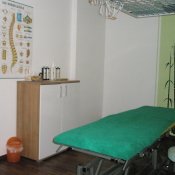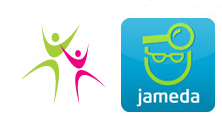Therapies for Children | Practice for Physiotherapy and Psycho motility Nadine Bartel
Physiotherapy for Central Motor Disorders (acc. to Bobath)
In the Bobath therapy for children, already newborns and babies get to know physiological, healthy motion sequences. The therapist recognizes the current development stage of the child and provides specific assistance until the next development stage is reached. This includes, for example, the active prone and supine position, moving over both sides of the body up to an active seat, the movement in form of crawling and scrabbling, the erection into a standing position and walking at the end of the first year of age.
In the so-called "handling", parents receive an instruction how to hold, carry and turn their baby at home so that they learn how to independently accompany the healthy development of their child.
The Bobath therapy for children is a specific, neurophysiologic concept. It is particularly suited for:
- Newborns,
- Children with development problems respectively delays,
- Children who are threatened by disability or are already disabled.
It also includes care beyond the first year of age as well as a specific provision of therapeutic appliances.
We also offer this treatment as preventive service/consultation.
Sensory Integration Therapy
We perceive our body and our environment via sensory organs. The functioning and the interac-tion of the so-called basic senses are essential for the development of a differentiated “body im-age“and our motility.
- Perception via the skin surface (touch, tactile system)
- Balance
- Proprioception (pressure and tractive perception via the muscles and joints)
If information cannot be gathered or integrated by these systems, gross and fine motor skills, co-ordination, dexterity, motor reactions respectively adaptabilities and action ability are affected.
This therapy offers children playful exercises in the perception areas described above so that they can develop their own body image/motility in a more differentiated way and/or better compensate it by other areas and, thus, expand its action ability.
Psycho-Motility
The focus of this holistic exercise-promoting therapy for children is on games and enjoyment of exercising. Playfully,
- Children experience themselves and their body,
- Children experiment with materials and environmental consistencies,
- Children experience themselves in contact to other children.
In doing so, they automatically and without pressure to perform expand
- Their body perception,
- Their motor skills (dexterity, endurance, coordination, balance),
- Their competence to deal with other children in the group.
Psycho motility is a great alternative to sports clubs and suited for all who would like to improve themselves individually and according to their own ability.
Mucoviscidosis (Cystic Fibrosis (CF))
Physiotherapy for Mocuviscidosis Patients
Playgroups for the Promotion of Motility
Individual groups on request
Treatment Concept acc. to Prof. Dr. med Adriano Ferrari
This concept describes a new perspective in the early diagnosis and rehabilitation of infantile cerebral palsy (ICP). More detailed diagnosis criteria, today, allow for a classification of ICP into clearly defined forms and variants being foundational for:
- A differentiated prognosis of the spontaneous course in case of each individual child,
- A clear assessment of treatment possibilities.
Rehabilitation aims at promoting all resources of the child and support in form of assistance in order to reach optimal assimilation functions.
Three-Dimensional Feet Therapy
We offer three-dimensional manual feet therapy on neurophysiologic basis.
Initially, this kind of therapy was introduced by Ms Barbara Zukunft-Huber in the year 1992 at the International Physiotherapy congress in Heidelberg. It is based on the usual feet development of a child in the first year of age and manual-therapeutic criteria. It provides new approaches for treat-ing pigeon toes, club feet, skew feet and flat feet. This treatment is described in the book "Der kleine Fuß ganz groß"(published by Urban & Fischer Verlag, Munich, ISBN 3 – 437-47990-3).
Pigeon toes and club feet can be treated without cast fixation. Club feet of the first and second grade which were scheduled for surgery often did not have to undergo surgery. But it needs to be emphasised that this depends on the severity of the foot and is not possible in any case.

 Therapies for Children
Therapies for Children

